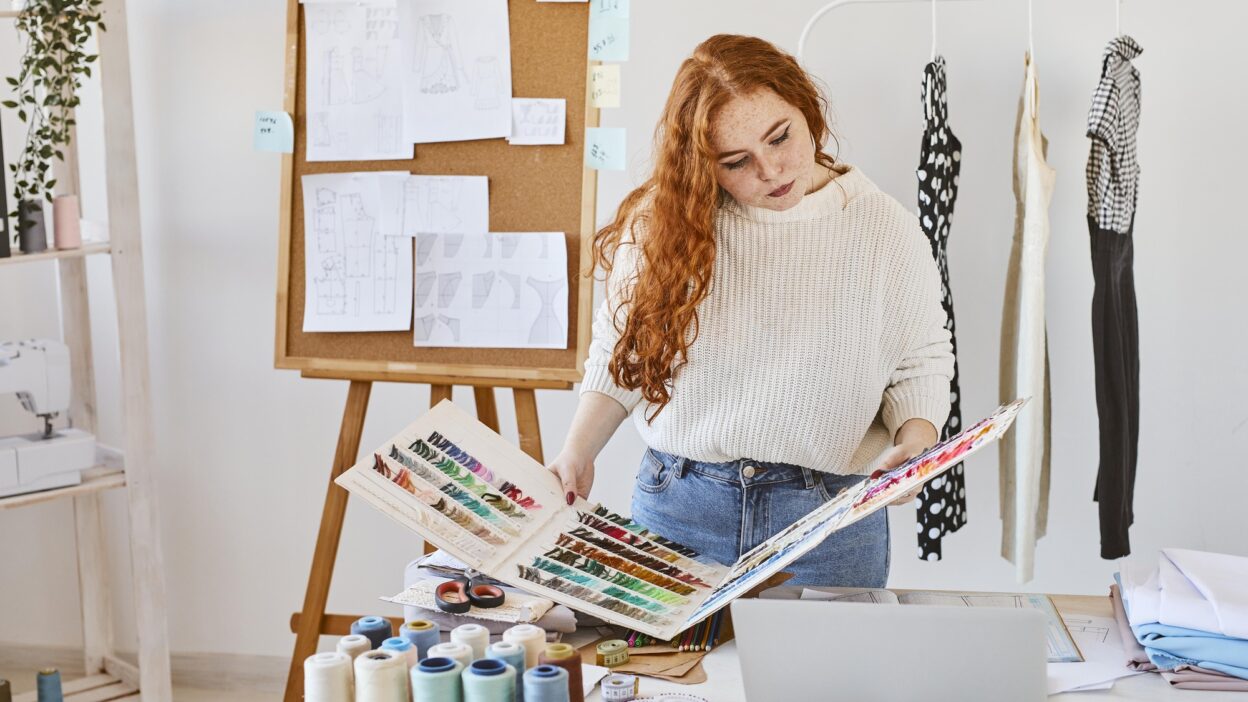Fashion trends are a reflection of consumer preferences and the influence of cultural, technological and social factors on design. To get fashion trends right you need to see how styles evolve over time and how they resonate with different audiences.
In the modern world trends are influenced by global events, sustainability movements and digital platforms like TikTok and Instagram. Fashion designers need to be on top of all this to create pieces that resonate with the current audience. For example athleisure, minimalism and gender fluid clothing is a result of societal shift towards comfort, inclusivity and self expression.
Getting fashion trends right also means understanding the cyclical nature of fashion. What was old is new again. Take the return of 90s grunge or early 2000s Y2K. By studying these patterns you can forecast what’s to come and incorporate it into your designs.
Lastly, subscribing to fashion magazines, attending fashion weeks and using tools like Pinterest Trend Analytics or Google Trends will give you an idea of what’s hot now and what will be hot in the future.

Researching the Market
To design fashion that sells, you need to know what the market is demanding. Market research gives you insight into consumer preferences, buying habits and emerging trends so you can design for real life.
Start by identifying your target audience. Who are you designing for? Consider age, gender, lifestyle and cultural influences. For example Gen Z consumers are all about sustainable and inclusive fashion, while working professionals are all about comfort. Explore platforms like Instagram, TikTok and Pinterest to see what’s trending, what outfits, hashtags and styles are popular. Engage with comments and discussions to see what people are saying. Also analyse sales data from e-commerce sites like ASOS, Zara or H&M to see what’s selling.
Also stay up to date with fashion reports from industry leaders like WGSN, Vogue Business or the CFDA. These sources give you seasonal trend analysis, colour palettes and material preferences so your designs are on point.
Finally conduct surveys or focus groups to get direct feedback from potential customers. By combining online research with direct engagement you’ll know your fashion designs are on market and stand out in a crowded space.working professionals may be all about comfort

Finding Inspiration in Everyday Life
Fashion is all about creativity and inspiration can come from anywhere. Everyday life is full of sources to spark your imagination and make your fashion feel fresh and new.
Start by looking around you. Architecture, street art, nature and cultural events can all influence your design process. For example, the flowing patterns of water or the bold lines of modern skyscrapers can inspire a silhouette or fabric texture.
Travel is another great source of inspiration. Exploring different cultures exposes you to traditional clothing, patterns and textiles that can be reworked into modern designs. Even if you can’t travel, documentaries, books and online galleries can give you a window into global style.
Look to personal experiences and emotions. Many iconic designers create collections based on how they feel or significant life events that resonate with people. Journaling or sketching regularly can help you capture those ideas.
Finally, follow other creative industries like music, film and technology. The crossover between fashion and pop culture often produces the biggest trends. Think how fashion is futuristic and how costumes in movies influence streetwear.
Inspiration is everywhere – it’s just about training your eye to see the extraordinary in the ordinary.

Past Fashion Trends to Learn From
The past is full of inspiration for modern fashion design. By looking back at past trends you can see what’s repeated, rework it and integrate the timelessness into your designs.
Fashion is cyclical. Trends like flared jeans, oversized blazers and bold prints come back round. But modernising these classics with new fabrics, cuts or details makes them relevant to today’s audience. For example the Y2K trend is back but now with sustainable materials and inclusive sizing.
Looking at vintage collections, archival photos and museum exhibits is a great way to see how iconic designers shaped fashion history. Look at the techniques they used, like hand embroidery or tailoring and adapt them to your contemporary design.
Runway shows from past decades are a goldmine of inspiration. Platforms like Vogue Runway archive past collections so you can see how trends evolved. Take note of the cultural or social context of those designs – this will give you insight into why certain styles worked.
And then think about what made past trends work. Was it the functionality, the look or the cultural context? Mix that with modern thinking and you have designs that are both nostalgic and new.

Sketching Your Vision
Sketching is the middle ground between your idea and the final product. A good sketch not only conveys your design concept but also the blueprint for the production process.
Start with a loose outline. Focus on the shape, the details and the overall feel of the design. Once you like the concept, refine the sketch by adding proportions and details. Croquis (pre-drawn body templates) can save time and keep your sketches consistent.
Make sure to include all the important elements in your sketches such as seams, pleats and embellishments. Use shading or color to indicate fabric textures, patterns and layering. For example if your design has a chiffon overlay or a sequined bodice, these details should be visible in your drawing.
Consider using digital tools like Adobe Illustrator, CorelDRAW or specialized fashion design software like CLO 3D. These allow you to create clean designs, scale them up and experiment with colors, fabrics and patterns virtually, and make changes easier.
And finally add notes about fabrics, measurements and any special instructions. So your idea is clear to pattern makers, tailors or collaborators. A good sketch is the foundation of fashion design.




